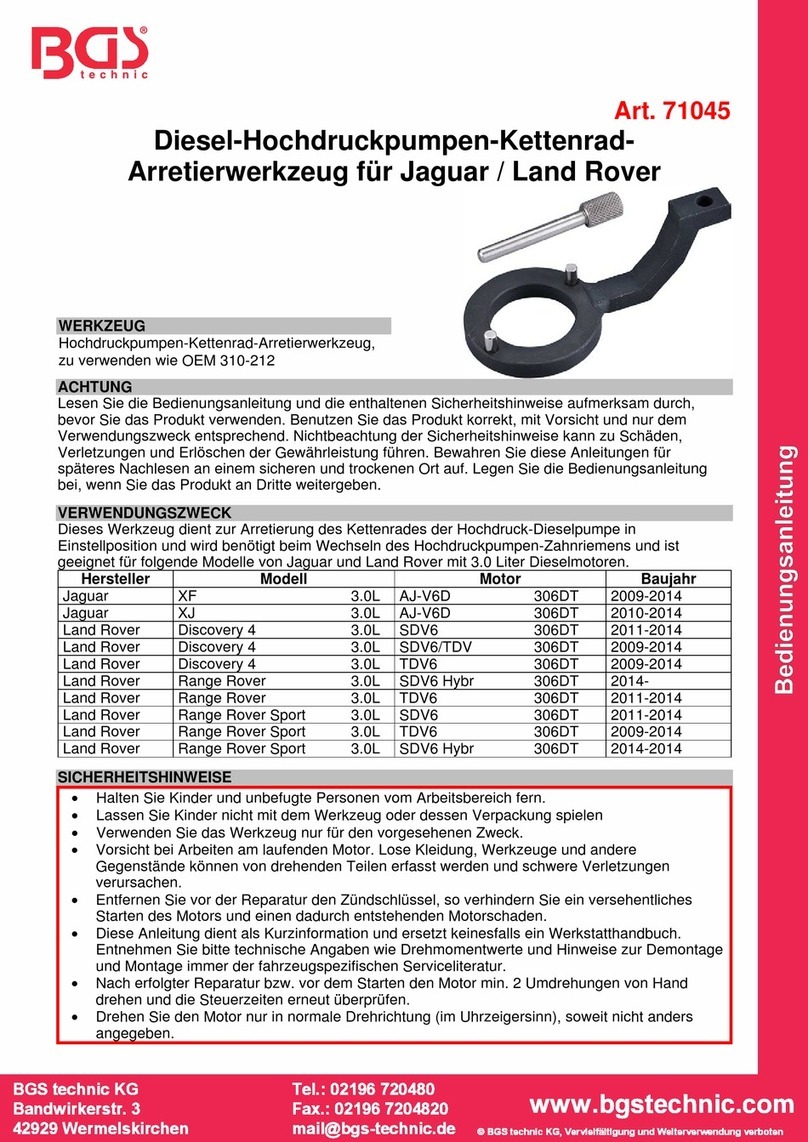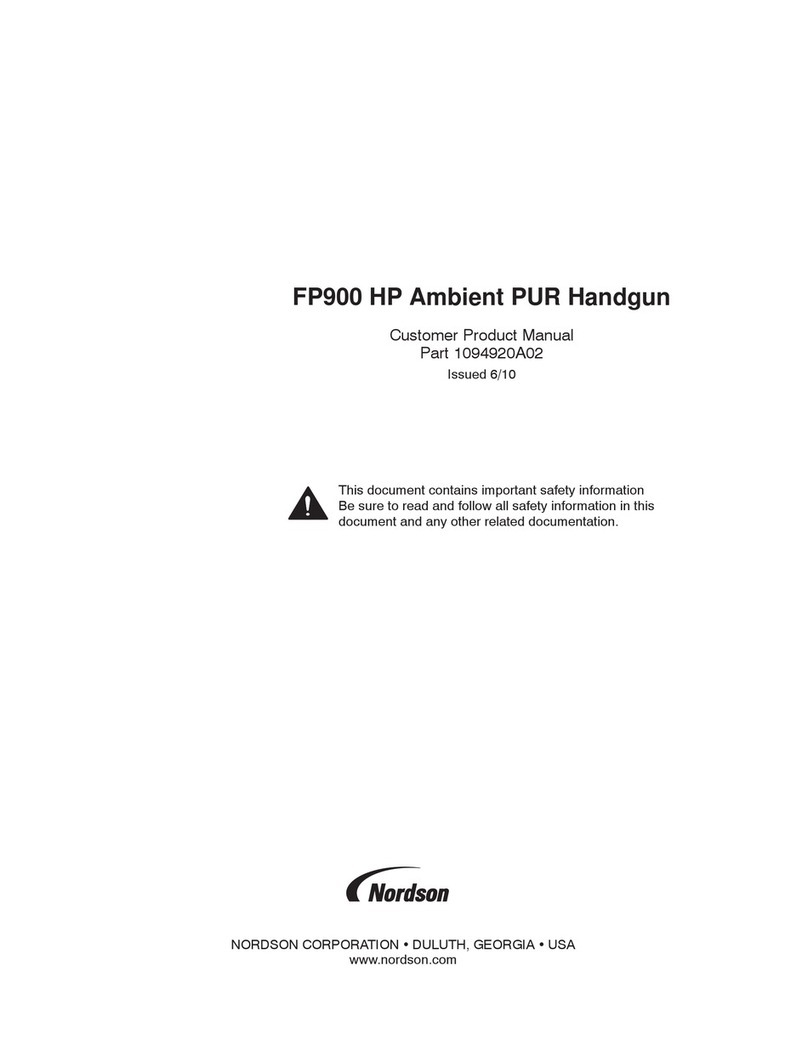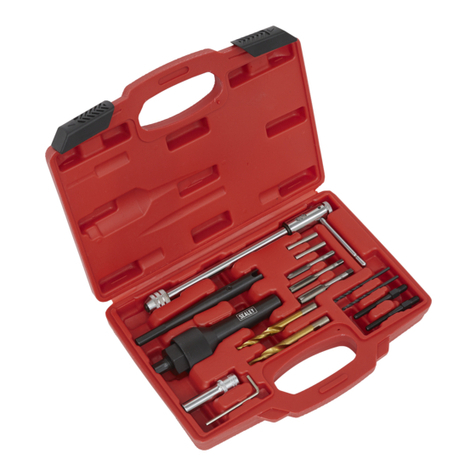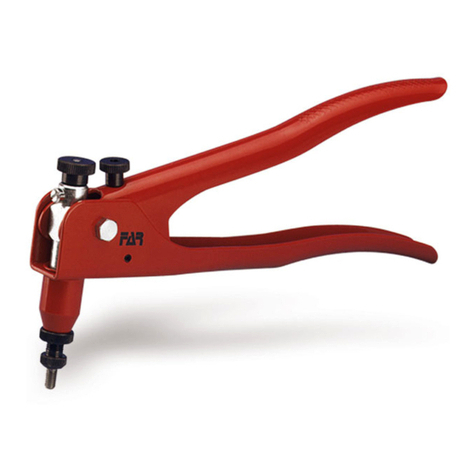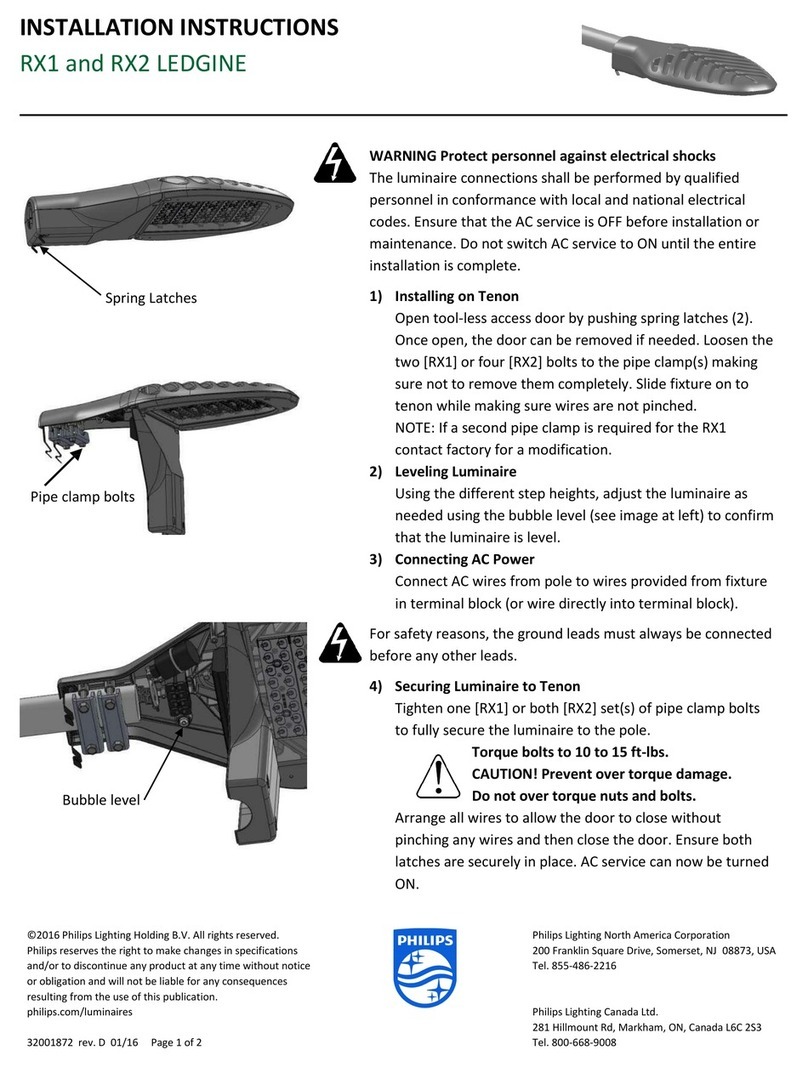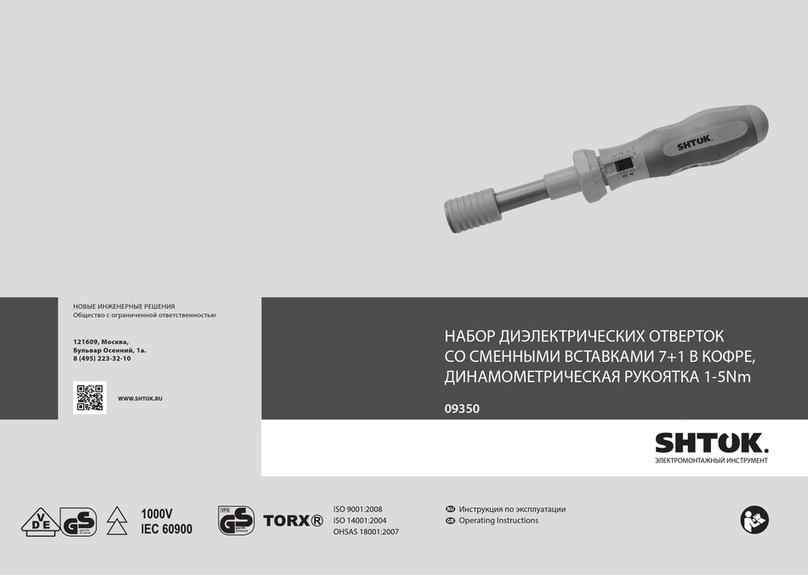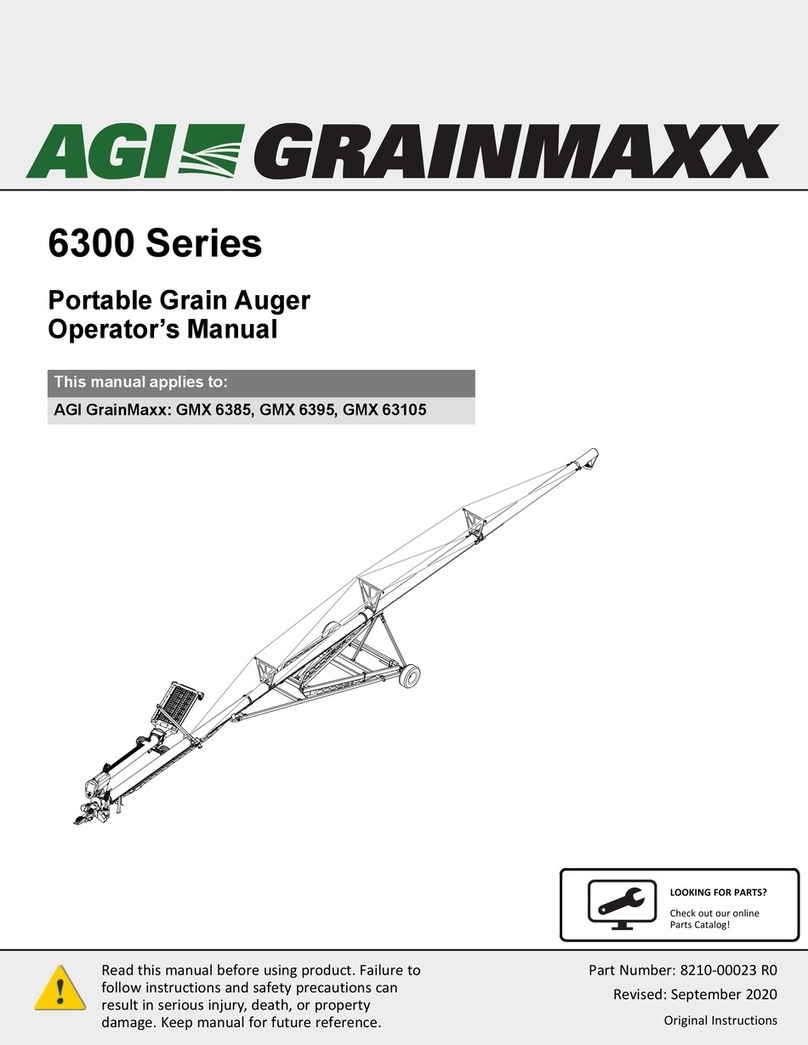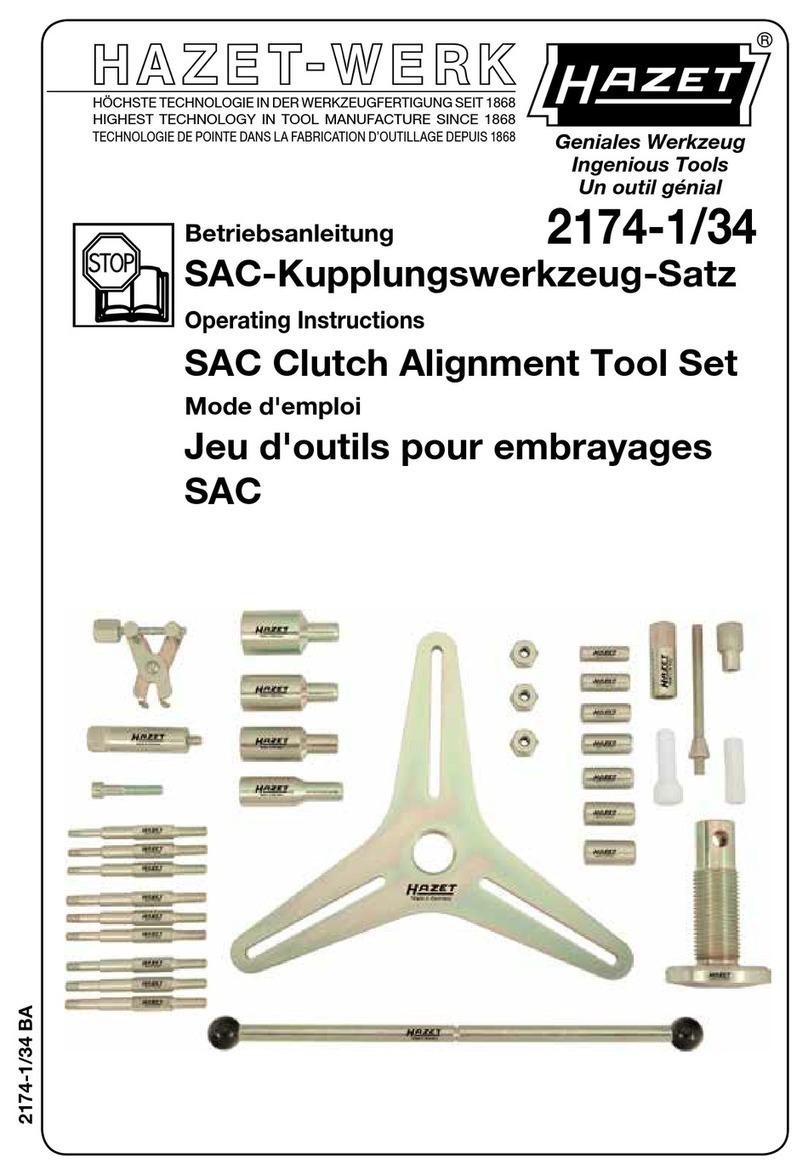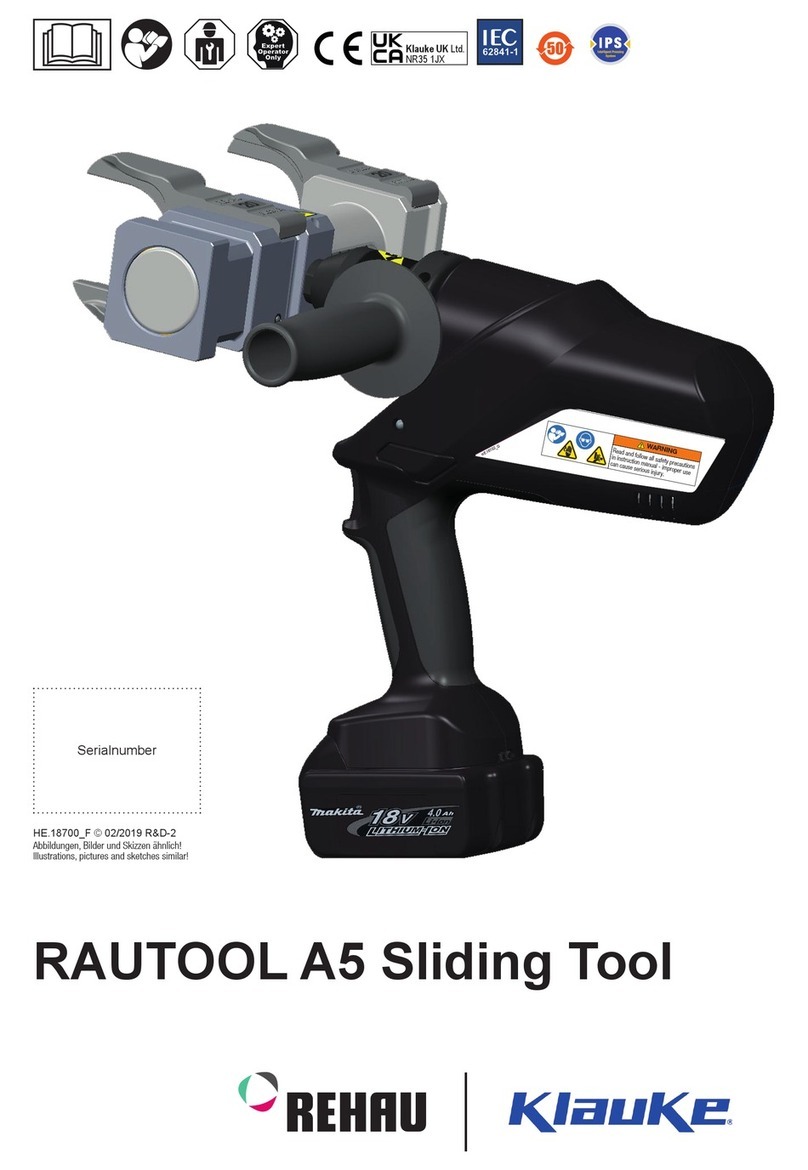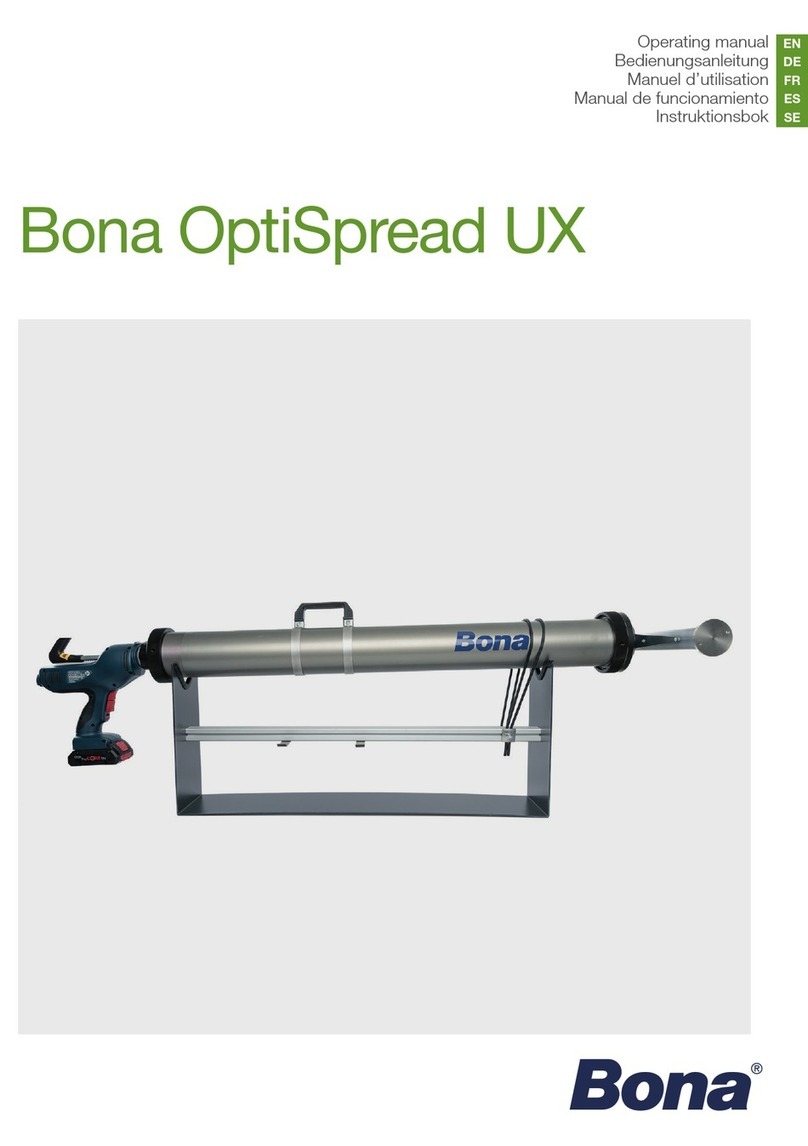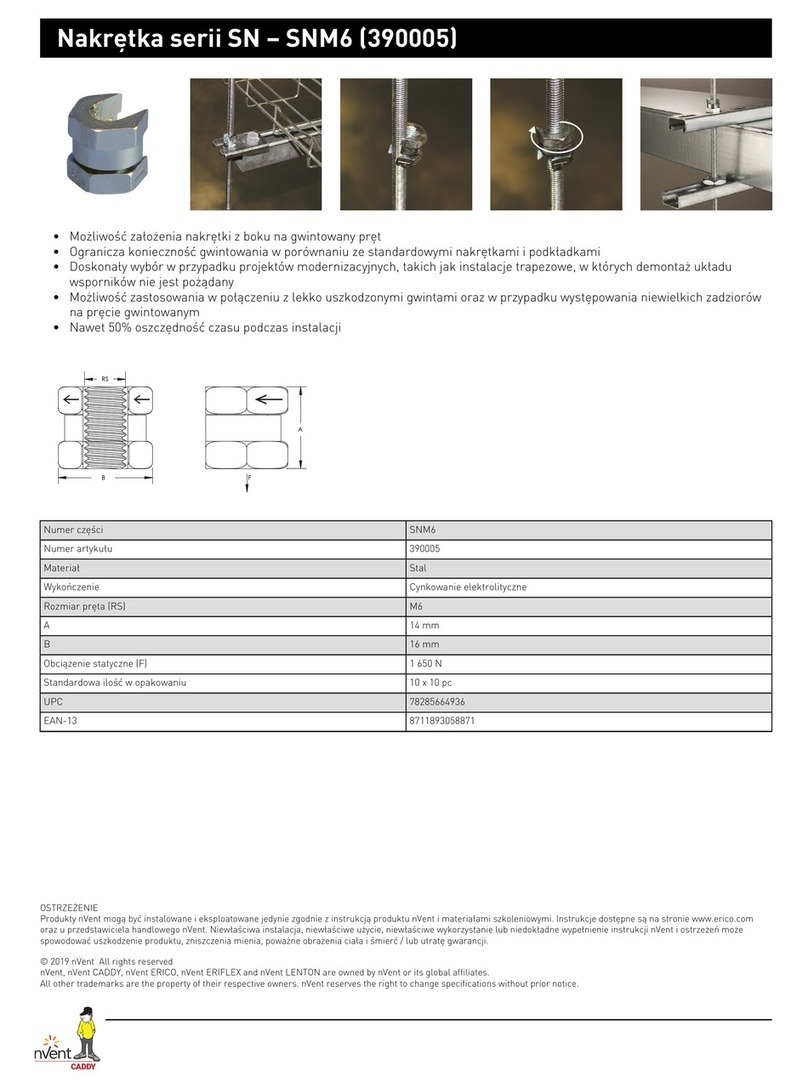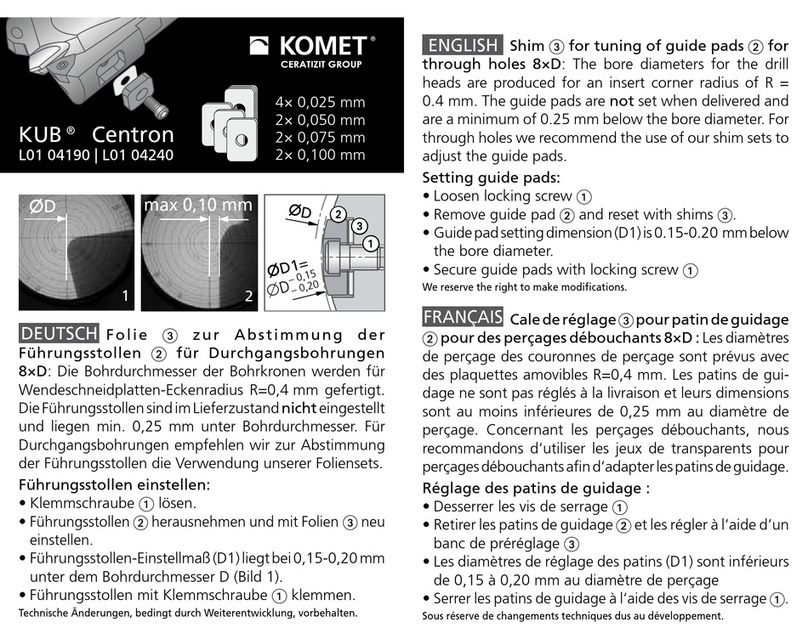Cherry Aerospace CherryMAX G744 User manual

Original Instructions G744
CherryMAX® Power Riveter
NSN 5130-01-151-1856

1
THE G744 TOOL
TABLE OF CONTENTS
Description ...............................................................................................................................................................................1
Specifications for G744 ...........................................................................................................................................................1
Safety Warnings ......................................................................................................................................................................2
How to Use the G744 ..............................................................................................................................................................3
Maintenance and Repair .........................................................................................................................................................3
Fill and Bleed Instructions .......................................................................................................................................................4
Trouble Shooting .....................................................................................................................................................................4
Overhaul ...................................................................................................................................................................................5
Air Valve .......................................................................................................................................................................5
Head Sub-Assembly ....................................................................................................................................................5
Handle Sub-Assembly .................................................................................................................................................6
G744 Pulling Heads .................................................................................................................................................................6
Installing Pulling Heads ...............................................................................................................................................7
Cross Section Drawing of G744 .............................................................................................................................................8
Parts List for G744 Riveter ......................................................................................................................................................9
Exploded View of G744 .........................................................................................................................................................10
Declaration of Conformity .......................................................................................................................................Back Cover
DESCRIPTION
The Cherry G744 is a pneumatic-hydraulic tool designed specifically for
the most efficient installation of 1/4” CherryMAX® rivets. However,
with the proper pulling heads and adapter, this tool can install other sizes
and types of rivets. This tool utilizes straight, offset and right-angle
pulling heads. Extensions are available for extending the pulling
heads to reach limited access areas. Refer to the pulling head section
for the correct pulling head part number for the rivet to be installed.
Its all metal housing makes this tool extremely durable for use in a shop
environment. It can be operated in any position with one hand. A stem
catcher bag may be ordered separately and attached to eliminate costly
clean-up.
SPECIFICATIONS FOR G744
Cherry Aerospace’ (CHERRY) policy is one of continuous development.
Specifications shown in this document may be subject to change which
may be introduced after publication. For the latest information always
consult CHERRY.
AIR PRESSURE 90 to 110 PSI (6.2 to 7.6 bar)
STROKE 0.625 inch (15.88 mm)
PULLING FORCE 3800 Pounds (16.90 kN) @ 90 PSI (6.2 bar)
CYCLE TIME Approximately one second
WEIGHT 7 Pounds (3.18 kg)
NOISE LEVEL 72 dB (A)
VIBRATION Less than 2.5 m/s2
AIR CONSUMPTION 0.31 SCF/cycle (8.78 L/cycle)

2
SAFETY WARNINGS
Operating this tool with a damaged or missing stem deflector, or using the deflector as a handle,
may result in severe personal injury. The pin deflector should be rotated until the aperture is
facing away from the operator and other persons working in the vicinity.
Approved eye protection should be worn when operating, repairing, or overhauling this tool.
Do not use beyond the design intent.
Do not use substitute components for repair.
Any modification to the tool, pulling heads, accessories or any component supplied by CHERRY®,
or their representatives, shall be the customer’s entire responsibility.
CHERRY® will be pleased to advise on any proposed modification.
The tool must be maintained in a safe working condition at all times and examined at regular
intervals for damage.
Before disassembling the tool for repair, refer to the maintenance instructions. All repairs shall be
undertaken only by personnel trained in CHERRY® installation tools.
Contact CHERRY® with your training requirement.
Always disconnect the air line from the tool inlet before attempting to service, adjust, fit or remove
any accessory.
Do not operate the tool when it is directed at any person.
Ensure that the vent holes do not become blocked or covered and that air line hoses are always in
good condition.
Avoid excessive contact with the hydraulic fluid to minimize the possibility of skin rashes.
Care should be taken to wash thoroughly.
Operating air pressure should not exceed 110 psi (7.6 bar).
Do not operate the tool without the pulling head in place.
Do not operate the tool unless the handle base (25) is fully secured by the retaining ring (26).
All retaining rings, screwed end caps, air fittings, trigger valves and pulling heads should be
attached securely and examined at the end of each working shift.
Do not pull rivet in the air.
The precautions to be used when using this tool must be explained by the customer to all
operators. Any questions regarding the correct operation of the tool and operator safety should be
directed to CHERRY®.
Do not pound on the rear of the tool head to force rivets into holes as this will damage the tool.
Do not depress the trigger while disconnecting the air bleeder and replacing the cap screw when
bleeding the tool.

3
HOW TO USE THE G744
After selecting the proper pulling head and attaching it securely to the G744, connect the air line to the tool. Insert the rivet
stem into the pulling head until the head of the rivet is in contact with the pulling head sleeve. This will ensure full engagement
between the jaws and the rivet stem and will prevent slippage.
Once the rivet stem is inserted in the H744A-8 pulling head, the rivet must be installed. The “stem stop” in the pulling head will
prevent the mandrel from moving back out the front of the head.
Insert the rivet into the application and pull the trigger to activate the tool. Upon the release of the trigger, the stem will eject to
the rear of the tool (when using the H744A-8 straight pulling head). When using the H827-8 offset pulling head, the stem
will eject through offset pulling head to the rear. When using the H828-8 right angle pulling head, the stem will eject out the
front.
MAINTENANCE AND REPAIR
The G744 Power Riveter has been manufactured to give maximum service with minimum care. In order that this may be
accomplished, the following recommendations should be followed:
1. The hydraulic system should be full of fluid and free from air at all times.
2. Keep excessive moisture and dirt out of air supply to prevent wear of air valve, air cylinder and air piston.
3. Tool should be routinely inspected for fluid leaks.
4. Do not pound the rear of the tool head to force rivets into holes as this will damage the tool.
5. Make sure the pulling head is correctly and securely attached.
Use automatic transmission fluid Type “A” (no substitutes). Cherry Aerospace recommends using ATF, Dexron III fluid.
DEXRON III FLUID SAFETY DATA
FIRST AID
Skin: Wash thoroughly with soap and water as soon as possible. Casual contact requires no immediate attention.
If irritation develops, consult a physician.
Ingestion: Seek medical attention immediately. DO NOT INDUCE VOMITING.
Eyes: Flush with copious amounts of water. If irritation develops, consult a physician.
Inhalation: No significant adverse health effects are expected to occur on short term exposure. Remove from contaminated area.
Apply artificial respiration if needed. If unconscious, consult physician.
FIRE
Suitable extinguishing media: CO2, dry powder, foam or water fog. DO NOT use water jets.
ENVIRONMENT
Waste Disposal: In accordance with local, state and federal regulations.
Spillage: Prevent entry into drains, sewers and water courses. Soak up with diatomaceous earth or other inert material. Store in
appropriate container for disposal.
HANDLING
Eye protection required. Protective gloves recommended. Chemically resistant boots and apron recommended. Use in well ventilated area.
COMBUSTIBILITY
Slightly combustible when heated above flash point. Will release flammable vapor which can burn in open or be explosive in
confined spaces if exposed to source of ignition.
STORAGE
Avoid storage near open flame or other sources of ignition.
PROPERTIES
Specificgravity 0.863
Weightpergallon 7.18 lbs.
Openflashpoint >200°C (392°F)

4
FILL AND BLEED INSTRUCTIONS
Bleeding replaces a small amount of fluid in the tool and eliminates any air from the system : connect the tool to the air line,
remove cap screw (14). (CAUTION: Do not depress trigger without cap screw or air bleeder attached.) Attach the Cherry air bleeder
(700A77), and slowly cycle tool several times. This will ensure the removal of any air from the hydraulic system and its replacement
with fluid.
Should it become necessary to completely refill the tool (such as would be required after the tool has been dismantled and re-
assembled), take the following steps: After removing head assembly, fill handle assembly (31) with the
recommended fluid to within 1/8” (3 mm) of the top of the handle
casting.
Replace head assembly (1) on the handle (31), being sure
gasket (53) and O-ring (52) are properly in place. Tighten cap
screws (54) uniformly to prevent leakage around gasket.
Remove the cap screw (14), attach Cherry Air Bleeder
(700A77). Bleeder (700A77) should not be filled past safety line
on bottle.
Connect tool to air line, purge system of air by cycling ten times
slowly or until bottle is free of air bubbles to fully circulate fluid
through the hydraulic system
DO NOT depress trigger while disconnecting the Air Bleeder
and replacing the cap screw (14).
TROUBLESHOOTING
1. Check the airline for correct pressure at the tool. It must
be 90 to 110 PSI (6.2 to 7.6 bar).
2. Check for fluid leakage:
Fluid leaking around the cap screw (14) in the
head indicates that the screw is loose or the Stat-
O-Seal (13) needs replacing.
If fluid should leak through the by-pass hole at the
base of the handle (31) the O-ring (34) is worn or
damaged.
Fluid leaking from the front of the head (1) indicates
that O-rings (2) are worn or damaged. Replace.
3. Check for excessive air leakage from the air valve:
If spring (40) is broken or dislodged, air will
bleed directly through the bottom of the air valve and
the head piston retreats to its full stroke without
returning. See air valve instructions on Page 5.
If O-ring (45) on plug (46) is worn or damaged,
replace.
If O-rings (41) on valve spool (42) are worn or
damaged, replace.
4. Check movement of the head piston (4). If it does not move
freely or is slow in operation:
O-rings (2), (5), (7) and (8) may be damaged and
require replacement.
Piston (4) may be mechanically locked due to
damaged parts.
Muffler (47) or air filter (43) inside valve spool (42) may
be plugged with dirt. Clean them thoroughly with
normal solvent and back-blow with compressed air.
Hole in metering screw (44) in valve spool (42) may be
blocked or damaged. Hole diameter should be .028"
(.71 mm). Clear and size or replace valve spool
assembly (56). Metering screw (44) and filter (43) are
not sold separately.
5. Rivet stem sticks in the pulling head:
Pulling head components need maintenance.
Disassemble the pulling head, clean and replace
worn parts. Reassemble following instructions on
page 7.
Spent rivet stems are wedged side by side in the pulling
head. Disassemble the pulling head, remove stems
and reassemble following the instructions on page 7.

5
OVERHAUL
CAUTION: Always disconnect the air supply
before any overhaul or maintenance.
The disassembly and reassembly procedures
can be accomplished by following the
instructions below and the drawings on pages 8
& 10.
Use extreme care during disassembly and
reassembly not to mar, nick or burr any
smooth surface that comes in contact with
sealing elements. Before installing O-rings,
be sure to apply an O-ring lubricant, such as
Lubriplate® 630-A.
It is recommended that special assembly
tools, which can be ordered under part number
G740KT, be used to overhaul this tool.
For a complete overhaul, order Service Kit
G744KS which contains a complete set of O-
rings, back-up rings, screws, washers and
gaskets.
Not shown, but included: 740A42 Seal Guide
Virtually all of the moving parts in this tool ride
on O-rings, protected by back-up rings where
high pressure dictates. This means no metal to
metal wear. By use of close tolerances and
low micro-inch surfaces against which the
O-rings seal, a long life can be expected before
any overhaul becomes necessary.
AIR VALVE
Disconnect tool from air supply. Remove retaining ring (48) and muffler (47). Insert a valve plug extractor (P1178), or a
5/16-18 threaded rod or bolt, into end of valve plug (46) and pull it out. Using the same procedure, pull out spool assembly
(56).
NOTE: It should never be necessary to remove valve sleeve (39) unless the ports in the sleeve are plugged up tightly from conta-
minated air. O-rings on this sleeve are static and hence do not wear. If it is suspected that the ports are plugged, use the following
procedure:
Use needle nose pliers to grasp the end of the spring (40), turn clockwise and pull out to dislodge from groove in handle.
With spring removed, valve sleeve (39) can be pulled out using the valve sleeve removal tool (837B740).
To re-assemble, reverse the above procedures being certain that all O-rings are properly lubricated. To avoid damaging the O-rings
(38), carefully install sleeve (39) with your finger. Gently push and wiggle sleeve to allow O-rings to slip past inner ports.
Spring (40) is best installed using a valve spring installation tool (836B740) to push the large diameter coil into the groove.
This requires care as the tool will not operate if the spring is not anchored firmly.
HEAD SUB-ASSEMBLY
Disconnect air supply and remove the complete pulling head from the tool before attempting to disassemble the
head assembly.
Remove the four socket head cap screws (54). Lift head assembly from the handle (31). Remove O-ring (52) and gasket (53).
Empty the fluid into a container by pouring from the handle. Dispose of the fluid according to environmental regulations.
Remove end cap (9). Push against threaded end of head piston (4) and slide it out of head body (1). Be careful not to
damage threads or cause burrs on polished head piston rod surface.
O-rings (2) and back-up ring (3) can now be removed using a bent hook. O-ring (8) can be removed in the same manner.
Upon re-assembly, be sure to install O-rings and back-up rings carefully to avoid cutting them. Always lubricate all O-rings. Just
prior to placing the head sub-assembly onto the handle, see Fill and Bleed Instructions. Also make sure to place O-ring
(52) and the gasket (53) on the top of the handle, and that they are properly oriented.
Tighten the four socket-head cap screws (54) uniformly to prevent leakage around the gasket.
Purge system of air using Cherry air bleeder (700A77) according to the “Fill and Bleed Instructions”.
THE G740KT TOOL KIT

6
HANDLE SUB-ASSEMBLY
Disconnect tool from air supply. Remove parts (24) through (28).
Holding tool upright, remove four socket-head cap screws (54). Lift head assembly from handle (31) and
set aside O-ring (52) and gasket (53). Empty all fluid into a container by pouring from handle.
Place piston rod wrench (700A61) down into the top of the handle (31), into the hex socket in the head of
the power piston rod (37). While holding this wrench remove the locknut (23) using the 7/16” socket in
packing plug wrench (700B65).
Still holding the piston wrench, remove the air piston (22) using the packing plug wrench (700B65) by
turning counterclockwise. When air piston is completely freed from the piston rod, tap or push on the
piston rod wrench to eject the piston from bottom of handle.
Slide power piston rod (37) back up to the end of its travel. Using the packing plug wrench (700B65),
remove packing plug (18). It may be necessary to hold the handle upside down in a vise while removing
the packing plug.
Power cylinder (32) can be tapped out by lowering power cylinder tool (740A43) down into the top of the
handle onto top of cylinder. The O-rings (15) and back-up rings (16) are best removed and replaced by
using a thin bent hook.
To re-assemble the handle, reverse the above procedure, being certain that all the O-rings are properly
lubricated before installation. Attach the seal guide (740A60) to the piston rod (37) and with a mallet, tap the
piston rod through the packing plug (18). When re-assembling a replacement air piston, items (19) through
(23), follow the instructions given below:
Clamp piston rod wrench (700A61) in a vise with the hex shaft pointed up.
Turn the handle upside down and place the hex end of the piston rod (37) onto the wrench (700A61).
Push handle casting down until it stops.
Assemble seal (20) and back-up rings (19) to air piston (22).
Place the air piston (22) into the handle bore. Be sure that the smooth side of the air piston (22) is facing
towards you.
Thread the locknut (23) onto the piston rod and tighten between 50 in.-lb (5.65 N-m) and 59 in.-lb
(6.67 N-m) of torque.

7
G744 PULLING HEADS
Pulling Heads are not furnished with riveter and must be ordered separately.
See the appropriate Tool Sheet for mounting, maintenance and operation instructions of particular pulling heads.
Pulling Head Type Adapter Rivet Rivet Diameters Maximum Grip
H744A-8 Straight - Bulbed CherryMAX®
Wiredraw CherryMAX® 1/4
1/4
All
-4 1
H828-8 Right Angle - Bulbed CherryMAX®
Wiredraw CherryMAX® 1/4
1/4 All
-4 1
H827-8 Offset - Bulbed CherryMAX®
Wiredraw CherryMAX® 1/4
1/4 All
-4 1
H846-456 Straight - Bulbed CherryMAX®
Wiredraw CherryMAX® 1/8, 5/32, 3/16 2,3
1/8, 5/32, 3/16 3All
-4 1
H701B-456 Straight 744A20 Bulbed CherryMAX®
Wiredraw CherryMAX® 1/8, 5/32, 3/16 2,3
1/8, 5/32, 3/16 3All
-6 1
H753A-456 Right Angle 744A20 Bulbed CherryMAX®
Wiredraw CherryMAX® 1/8, 5/32, 3/16 2,3
1/8, 5/32, 3/16 3All
-4 1
H781-456 Offset 744A20 Bulbed CherryMAX®
Wiredraw CherryMAX® 1/8, 5/32, 3/16 2,3
1/8, 5/32, 3/16 3All
-4 1
H782-( ) Offset 744A20 Various Fasteners
(see Tool Sheet)
Various sizes
(see Tool Sheet)
H744-5MB
H744-6MB Straight - “S” Type Maxibolt® 5/32, 3/16 All
H828-5MB
H828-6MB Right Angle - “S” Type Maxibolt® 5/32
3/16 All
H828-56MBP Right Angle - Maxibolt® Plus 5/32
3/16 All
H856-6MB Offset - “S” Type Maxibolt® 3/16 All
1. On the first stroke.
2. Nominal and oversize.
3. No 3/16 aluminum, Alloy steel and Monel only.

8
CROSS SECTION OF G744

9
PART LIST FOR THE G744 (744-081) RIVETER ASSEMBLY
*Not furnished with riveter; must be ordered separately if desired.
**No substitutions.
*** Not sold separately.
Note: Use Loctite® #271 or equivalent when assembling items 1 and 1A.
ITEM
NO
PART NO DESCRIPTION QTY
744B5 SUB-ASSEMBLY, HEAD
744B6 SUB-ASSEMBLY, HEAD CYLINDER
1 744D2 CYLINDER, HEAD 1
1A 744B7 FITTING, NOSE 1
2 P-621 O-RING 2
3 P-1119 RING, BACK-UP 1
4 744C3 PISTON, HEAD 1
5 P-877 O-RING 1
6 P-878 RING, BACK-UP 1
7 P-553 O-RING 2
8 P-112 O-RING 1
9 744B4 CAP, HEAD 1
10 P-880 RING, RETAINING (NON-STANDARD) 1
11 703A13 FITTING, DEFLECTOR 1
12 530A16 DEFLECTOR, PIN 1
13 P-572 STAT-O-SEAL 1
14 P-881 SCREW, BUTTON HD. SOC. (10-32 x 3/8) 1
744-C34 SUB-ASSEMBLY, HANDLE
15 P-838** O-RING, DISOGRIN 2
16 P-115 RING, BACK-UP 2
17 P-889 O-RING 1
18 740B13 PLUG, PACKING 1
19 P-909 RING, BACK-UP 2
20 P-887 RING, QUAD 1
21 700A21 WASHER (REF.)*** 1
22 740B6 PISTON, AIR (INCLUDES 700A21) 1
23 P-737 NUT, CONELOK 1/4-20 1
24 P-890 O-RING 1
25 740C4 BASE, HANDLE 1
26 P-886 RING, RETAINING 1
27 740B5 COVER, BASE 1
28 P-884 RING, RETAINING 1
29 703A33 ASSEMBLY, TRIGGER (INCLUDES P-223) 1
30 P-223 O-RING 1
31 743A11 HANDLE 1
32 740C7 CYLINDER, POWER 1
33 P-833** O-RING, DISOGRIN 1
34 P-892** O-RING, DISOGRIN 1
35 P-908 RING, BACK-UP 1
36 P-508 O-RING 1
37 740A8 ROD, POWER PISTON 1
38 P-268 O-RING 4
39 740B46 SLEEVE, VALVE 1
40 740A18 SPRING 1
41 P-891 O-RING 4
56 740A44 SUB-ASSEMBLY, VALVE SPOOL 1
42 740B45*** SPOOL, VALVE 1
43 700A18*** FILTER 1
44 700A69*** SCREW, METERING 1
45 P-848 O-RING 2
46 740B16 PLUG, VALVE 1
47 740A17 MUFFLER 1
48 P-321 RING, RETAINING (INT. Ø1.000) 1
49 530A34 SWIVEL 1
50 P-195 O-RING (.630, .424, .103) 2
51 530A35 BOLT, SWIVEL 1
52 P-832** O-RING, DISOGRIN 1
53 700A22 GASKET 1
54 P-91 SCREW, SOC HD. CAP, 10-24 X 1/2 4
55 670A20* BAG, STEM CATCHER 1

10
EXPLODED VIEW OF G744

11
© 2007 Cherry Aerospace
Supplier’s Federal Identification Code: 11815 TM-G744
Rev.: A
Date: 02/05/07
CR# 07-0097
Declaration of Conformity
We, Cherry® Aerospace, 1224 E. Warner Ave., Santa Ana, CA 92705
declare under our sole responsibility that the product
type G744
Serial No.-
to which this declaration relates is in conformity with the following standards
EN292 part 1 and part 2
ISO 8662 Part 1
ISO 3744
following the provisions of the Machine Directive 89/392/EEC
(as amended by Directive 91/368/EEC) and 93/68/EEC
Santa Ana, CA -
date of issue
Original certification and signatures on file
LOCTITE
®
is a registered trademark of Henkel Corporation
DEXRON®is a registered trademark of GM corporation.
PARKER®is a trademark of Parker Hannifin Corporation
LUBRRIPLATE®is a trademark of Fiske Brothers Refining Co.
Seller warrants the goods conform to applicable specifications and drawings and will be manufactured and inspected according to generally accepted practices of
companies manufacturing industrial or aerospace fasteners. In the event of any breach of the foregoing warranty, Buyer’s sole remedy shall be to return defective
goods (after receiving authorization from Seller) for replacement or refund of the purchase price, at the Seller’s option. Seller agrees to any freight costs in
connection with the return of any defective goods, but any costs relating to removal of the defective or nonconforming goods or installation of replacement goods
shall be Buyer’s responsibility. SELLER’S WARRANTY DOES NOT APPLY WHEN ANY PHYSICAL OR CHEMICAL CHANGE IN THE FORM OF THE
PRODUCT IS MADE BY BUYER.
THE FOREGOING EXPRESS WARRANTY AND REMEDY ARE EXCLUSIVE AND ARE IN LIEU OF ALL OTHER WARRANTIES AND REMEDIES;
ANY IMPLIED WARRANTY AS TO QUALITY, FITNESS FOR PURPOSE, OR MERCHANTABILITY IS HEREBY SPECIFICALLY DISCLAIMED AND
EXCLUDED BY SELLER. THIS WARRANTY IS VOID IF SELLER IS NOT NOTIFIED IN WRITING OF ANY REJECTION OF THE GOODS WITHIN ONE
(1) YEAR AFTER INITIAL USE BY BUYER OF ANY POWER RIVETER OR NINETY (90) DAYS AFTER INITIAL USE OF ANY OTHER PRODUCT.
Seller shall not be liable under any circumstances for incidental, special or consequential damages arising in whole or in part from any breach by Seller, AND SUCH
INCIDENTAL, SPECIA
L, OR CONSEQUENTIAL DAMAGES ARE HEREBY EXPRESSLY EXCLUDED.
WARRANTY
Table of contents
Other Cherry Aerospace Tools manuals

Cherry Aerospace
Cherry Aerospace H83HL-6MB Instruction Manual

Cherry Aerospace
Cherry Aerospace G84-LS User manual

Cherry Aerospace
Cherry Aerospace H828-6MB Instruction Manual

Cherry Aerospace
Cherry Aerospace H753A-275NP Instruction Manual

Cherry Aerospace
Cherry Aerospace H83B-6MBU Instruction Manual

Cherry Aerospace
Cherry Aerospace G84-LS User manual

Cherry Aerospace
Cherry Aerospace H753A-456 User manual

Cherry Aerospace
Cherry Aerospace H828-8MB Instruction Manual
